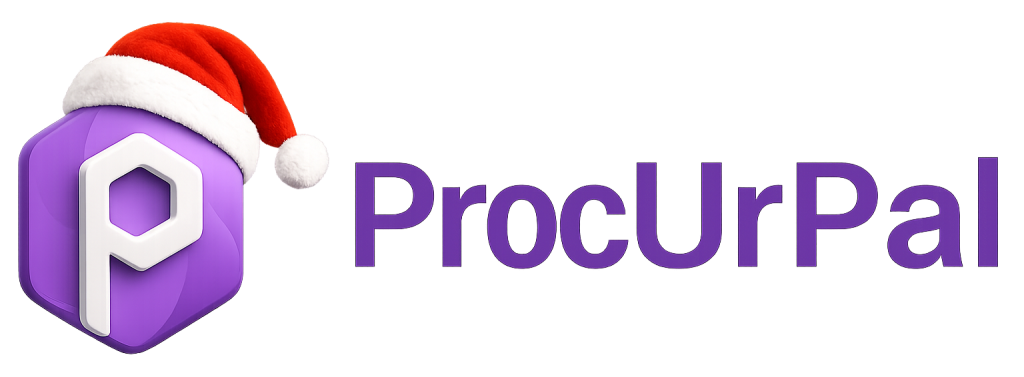Smart Procurement Strategies for Small Businesses
Introduction For small businesses, effective procurement is not just about securing the best deals; it’s about creating a streamlined process that aligns with overall business goals. Unfortunately, many small enterprises struggle with procurement inefficiencies due to limited resources, lack of technology, and fragmented supply chains. However, by embracing smart procurement strategies, small businesses can optimize their buying processes, reduce costs, and improve supplier relationships. This article explores practical procurement strategies that can help small businesses operate more efficiently and scale successfully. 1. Embrace Technology for Automation and Efficiency 📲 The adoption of procurement technology, even on a small scale, can drastically improve operational efficiency. Automated tools allow businesses to streamline tasks like purchase orders, invoice processing, and supplier management. With cloud-based procurement solutions, even small businesses can access data in real time, track spending, and gain valuable insights into purchasing patterns. Many small businesses benefit from platforms that automate routine tasks and help them stay organized, enabling them to make faster, smarter decisions without the need for extensive human resources. AI-driven procurement solutions, such as ProcurPal, provide automated tools for sourcing and tracking purchases, making it easier to find the right suppliers and negotiate better deals. By embracing these technologies, small businesses can simplify procurement while gaining significant time and cost savings. 2. Build Strong Supplier Relationships 🤝 A crucial part of any successful procurement strategy is developing solid relationships with suppliers. For small businesses, fostering long-term partnerships can lead to better terms, priority service, and enhanced negotiation power. Open communication and mutual trust are the cornerstones of strong supplier relationships. Small businesses should aim to collaborate with suppliers who understand their specific needs and are willing to offer flexible solutions. Building supplier loyalty doesn’t always mean paying higher prices. Small businesses can leverage loyalty by committing to regular orders, offering prompt payments, or consolidating their purchasing volume to secure discounts. A good supplier will not only meet delivery requirements but also help you innovate and find ways to optimize costs over time. 3. Focus on Cost-Effective Purchasing Strategies 💡 For small businesses, keeping procurement costs under control is crucial. This requires adopting a strategy that aligns with the business’s financial capabilities. Small businesses should focus on bulk purchasing for frequently used items or work with suppliers who offer discounts for long-term contracts or consistent order volumes. Negotiating better payment terms, such as extended credit periods or discounts for early payments, can also help improve cash flow. Additionally, small businesses can explore group purchasing or cooperative buying, where multiple small companies come together to purchase in bulk at a lower price. This strategy provides access to better pricing and discounts that might otherwise be out of reach for an individual small business. 4. Prioritize Quality Over Quantity 🏅 While small businesses often face budget constraints, it’s essential to balance cost savings with quality. The temptation to go for the cheapest option can sometimes result in poor-quality products or services that negatively impact customer satisfaction or business operations. Smart procurement strategies emphasize purchasing high-quality products that offer long-term value, even if they come at a slightly higher initial cost. Small businesses should seek out suppliers that provide reliable, durable products that won’t need to be replaced frequently. Prioritizing quality also helps to maintain customer satisfaction and ensure smoother business operations, reducing the risk of delays, returns, and reputational damage. 5. Optimize Inventory Management 📦 Effective inventory management is a cornerstone of any successful procurement strategy. Small businesses must keep track of their inventory to avoid overstocking or stockouts, both of which can lead to unnecessary costs. AI-based inventory management systems allow businesses to forecast demand and automatically reorder products when stock levels reach a certain threshold. By optimizing inventory, businesses can maintain a lean operation, reduce waste, and ensure they are never caught in a situation where they’re running low on key products. These systems also offer insights into purchasing patterns, helping small businesses make more informed decisions about when and how much to buy. 6. Be Agile and Adaptable in Procurement 🌍 Small businesses must be nimble in their procurement strategies to remain competitive. This means being able to adapt quickly to changes in demand, supplier availability, or market conditions. Building an agile procurement process ensures that small businesses can scale up or down based on their needs without overextending themselves. A flexible procurement strategy allows small businesses to respond to seasonal variations, sudden shifts in customer demand, and unforeseen supply chain disruptions. By implementing real-time procurement tracking and leveraging flexible suppliers, small businesses can stay ahead of potential issues and make adjustments on the fly. Final Thoughts Effective procurement is crucial for small businesses looking to thrive in today’s competitive market. By embracing technology, building strong supplier relationships, focusing on cost-effective strategies, prioritizing quality, and optimizing inventory management, small businesses can transform their procurement processes. The key is to keep the process as simple and efficient as possible while maintaining flexibility and adaptability in the face of change. These strategies will not only help businesses save money but will also enable them to build a resilient, future-proof procurement system.





